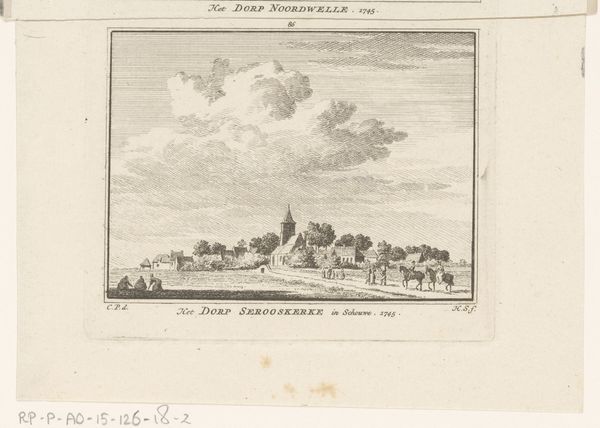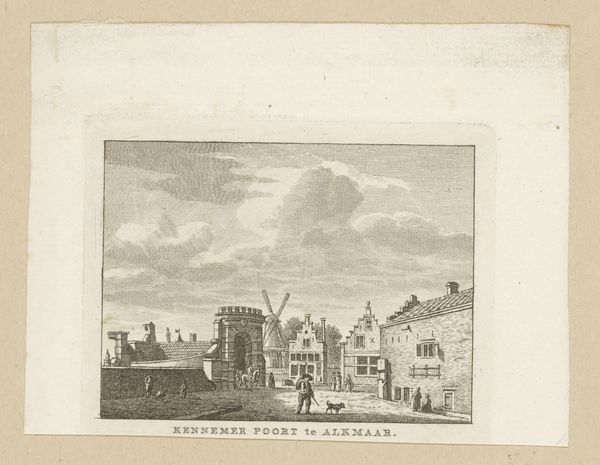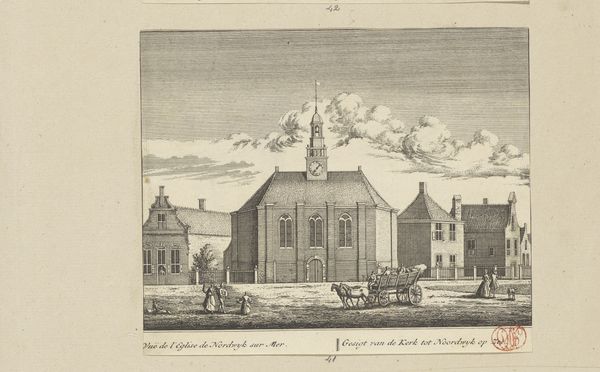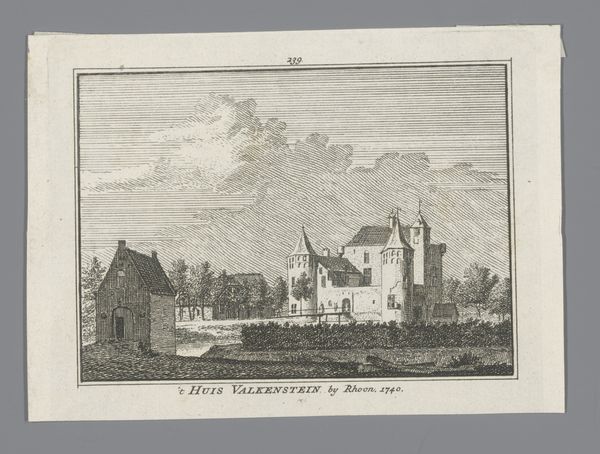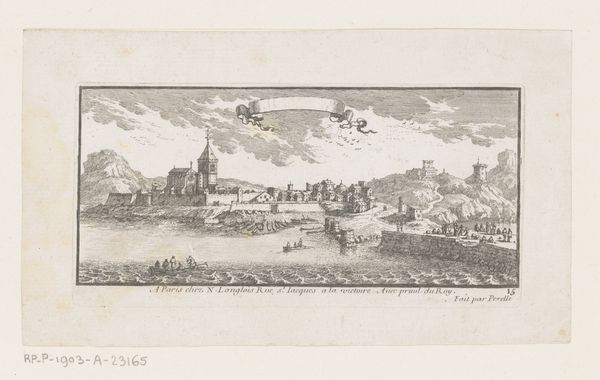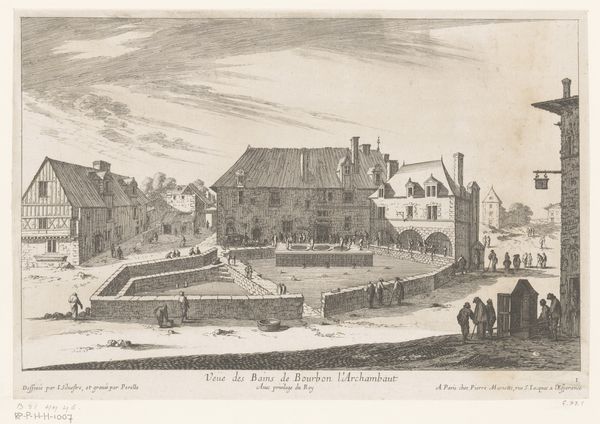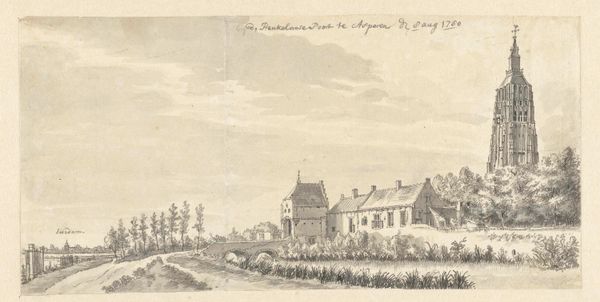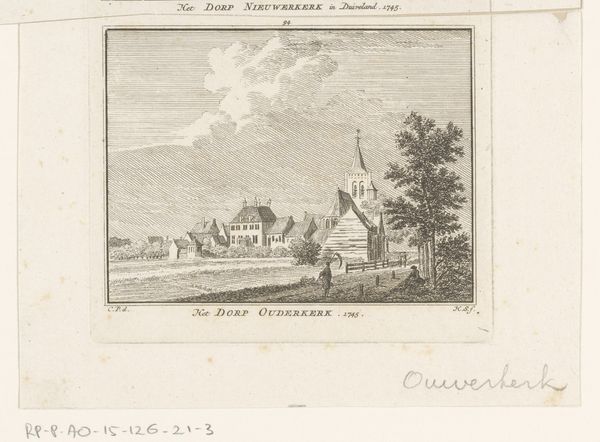
Dimensions: height 88 mm, width 110 mm
Copyright: Rijks Museum: Open Domain
Hendrik Spilman created this print of the Valkhof and Belvédère in the mid-18th century using etching and engraving, two intaglio techniques where lines are incised into a metal plate, then inked and pressed onto paper. Look closely, and you'll see that the crisp precision of the architecture relies on the engraver’s skilled hand. Each line, each mark, contributes to the illusion of depth and form. Spilman likely used specialized tools such as burins and needles to carve the image, demanding careful labor. The physical act of cutting into the metal, and the repetitive printing process, underline the engraver’s role in disseminating images and information, in a pre-photographic age. This print also speaks to the growth of cities, a trend in the 18th century and beyond. It immortalizes the historic site of Valkhof in Nijmegen, while subtly reminding us of the human labor involved in the creation and distribution of such images. The artist, the printmaker, and the publisher, were all active participants in a burgeoning visual culture.
Comments
No comments
Be the first to comment and join the conversation on the ultimate creative platform.
